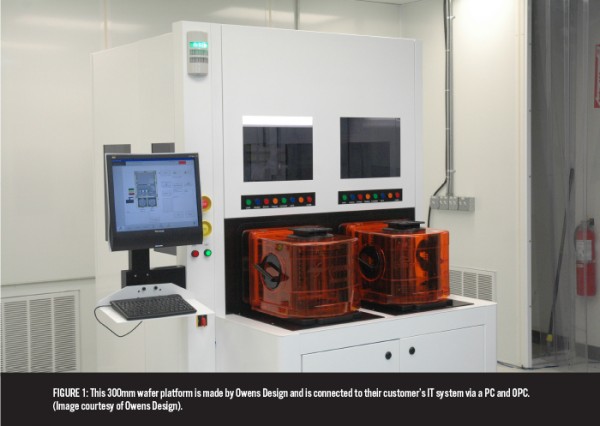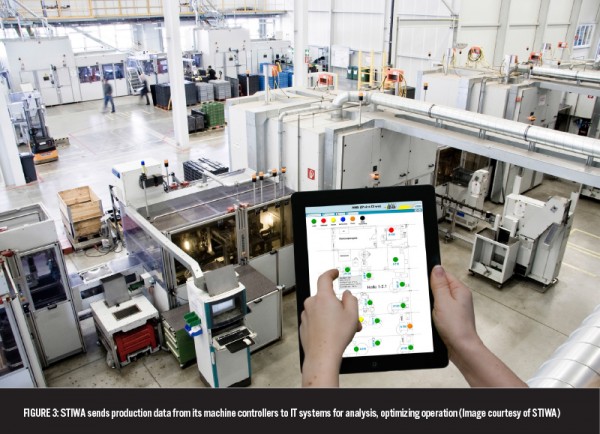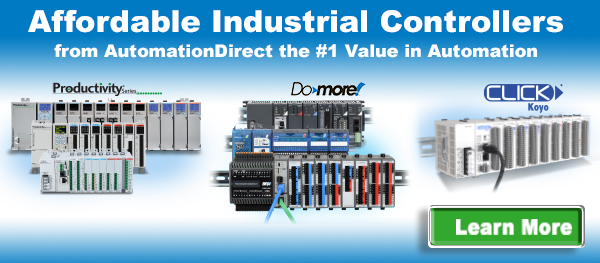Once upon a time, individual machines were stranded on an island, or just linked to other machines using a few discrete I/O and dry contact relays. Then came machine-to-machine data links such as a proprietary PLC-based network. Today, and certainly in the future, machines are being linked to IT systems.
Both machine builders and their customers benefit from connecting machines to IT systems. The closed systems and proprietary communication protocols of the past, and the difficulties they caused, have given way to open systems. This makes it easier to get connected, as today’s standard communication protocols and open systems are providing a clear path to integration.
In the Control Design July Cover story “Tear Down This Wall!”, Doug Putnam-Pite says, “Linking our tools and machines to IT systems allows our customers to customize data acquisition systems to meet their specific needs, monitor machine performance remotely and compare performance among multiple machines.” Putnam-Pite is director of software development at Owens Design in Fremont, California. Owens Design makes high-speed material handling equipment for the semiconductor, disk drive, consumer electronics and solar industries (Figure 1).
“Linking machines to IT systems provides a great deal of information about how and where to deploy idle machines, along with information about when it is safe to continue, or when there is a need to stop a machine or process,” points out Richard Clark, Wonderware InduSoft technical specialist at Schneider Electric, in the article. “This information can be used to increase uptime, reduce operating costs, and provide the ability to make decisions remotely. Interfacing with ERP, and using JIT or other ordering or supply chain techniques, can help match machine production to process line needs.”
Improved product quality is a never-ending goal of most production machines and systems. Collecting data from machines and sending it to quality assurance and quality control software for monitoring and analysis helps achieve this goal. Connecting machines to IT or ERP systems allows real time inventory control. It also allows remote access by OEMs and their customers. These remote access features often use cloud-based connections to the IT system (Table 1)
Open communication hardware and software standards make it easier to create and maintain links between machines and IT systems. This is particularly true with PC-based controls and HMIs.
OPC Simplifies Integration
OEMs providing machines with PC-based HMIs, such as Owens Design, often link to IT systems using Open Platform Communication (OPC). The PC makes it easy, but others prefer connecting the IT system directly to the PLC.
Duane Gilson, a control engineer at Quad/Graphics, located in Sussex, Wisconsin, employs PLCs to track cylinders in an inventory control system for printing machines and other similar processes. “The automation of our cylinder storage and retrieval system in Franklin, Kentucky, was instrumental in reducing processing time, increasing throughput, eliminating errors and improving safety,” notes Gilson in the cover story.
“From the time an operator inbounds a cylinder into the storage system until it is processed and sent back to the printing press, an RFID system tracks the cylinders. This has eliminated cylinders being lost due to operator error, incorrect cylinders being engraved or wrong jobs being loaded into the engravers,” continues Gilson in the article.
“The data from the RFID readers also tracks the cylinder carts to make sure the cylinders are placed on the correct carts for transport,” says Gilson. “This prevents accidents when cylinders are misplaced on carts. The control system reads the status of the equipment to track the cylinder movement, loads the correct job into the engravers, controls inventory and ensures the correct cylinders are brought out to both the imaging department and the printing presses.”
According to the Cover Story, Quad/Graphics’ inventory control system starts with scanning print cylinders with RFID tags (Figure 2). These scanners are connected to a PLC-based Horstmann Cylinder Storage and Retrieval system. Quad/Graphics’ automation controls system (ACS) uses OPC to read status bits from the PLCs, and to write commands to the PLCs. The commands can be to pick/place cylinders, reset faults, abort task and retrieve/store cylinders. The ACS is a custom IT application running on a server. Users install and run a client application on their laptop or PC to interface to the ACS.
Enabling Data Analysis
STIWA Automation uses PLCs to communicate directly to IT systems. In its assembly and process modules (Figure 3), and in its automated transport, feeding and packaging systems, it uses its manufacturing software to collect data directly from PLCs. The manufacturing software allows STIWA engineers to use MatLab to analyze the large amounts of production data collected. This capability increases output by enabling reductions in cycle times through the calculation of time-optimal trajectories for the modules.
Every second, STIWA’s system collects over one megabyte of raw production data including torque, noise and a variety of other module measurements. The data is filtered, processed and analyzed using a variety of algorithms to establish suitable tolerances, modify production process variables or compute time-optimized motion tracks for robots and other transfer systems. These algorithms were originally written in structured text within the PLC. As the algorithms became more complex, this method was found to be slow.
With the connection to the IT system, STIWA engineers can import machine and product data into MatLab to visualize the data and to identify problems and optimization opportunities. In the Control Design article, Martin Werner states, “To be effective, our algorithms must analyze a huge amount of data in near real-time.” Werner is a software tools development engineer at STIWA. “We achieved this high level of performance by optimizing our MatLab algorithms.”
For decades, many options have been available for machine builders to implement remote access, but improvements are providing faster implementation, improved security and wider access.
To read more articles about programmable control click here, communication click here or operator interface click here.
Originally published: Sept. 3, 2015






